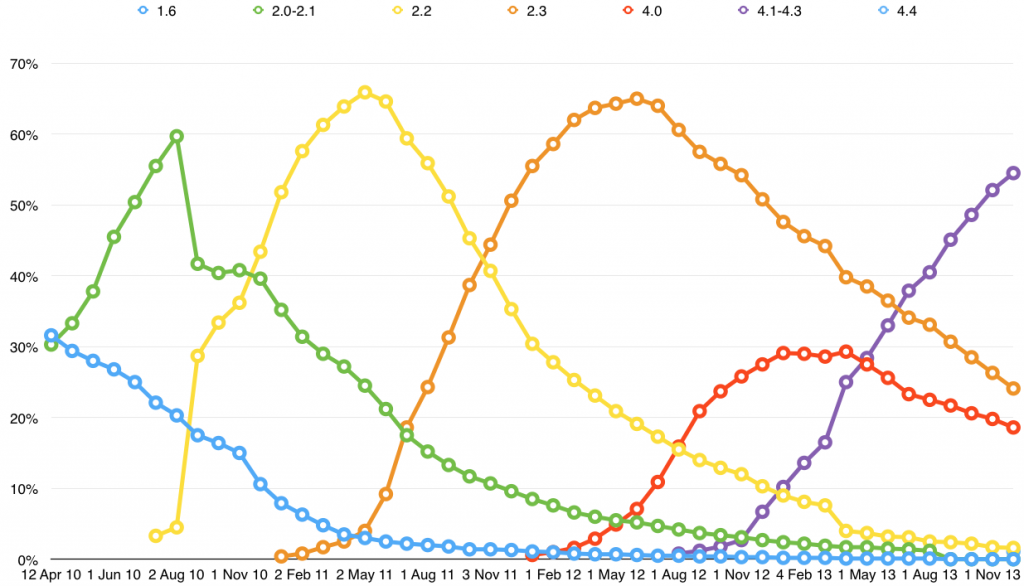Google regularly updates the data it provides to developers on Android versions in use, screen sizes and screen densities, and I’ve been diving into this data today for a report I’m working on. In the next few days, Google will update the data again and there will no doubt be the usual flurry of blog posts and news items about Android fragmentation. But I wanted to share some thoughts that occurred to me as I looked through this data that go beyond the usual rhetoric. Some of these are original, some of them likely aren’t.
Firstly, a fairly predictable pattern has emerged in the adoption of the versions of Android, as follows (and as illustrated by the chart below) 1:
Notes:
- It’s worth noting that the methodology Google uses for all these numbers changed in April 2013, and now reflects only devices actively using the Google Play store, and not all devices as previously. From what I can tell, it hasn’t made an enormous difference, but has slightly increased the representation of newer versions while decreasing or eliminating the representation of older versions. ↩
